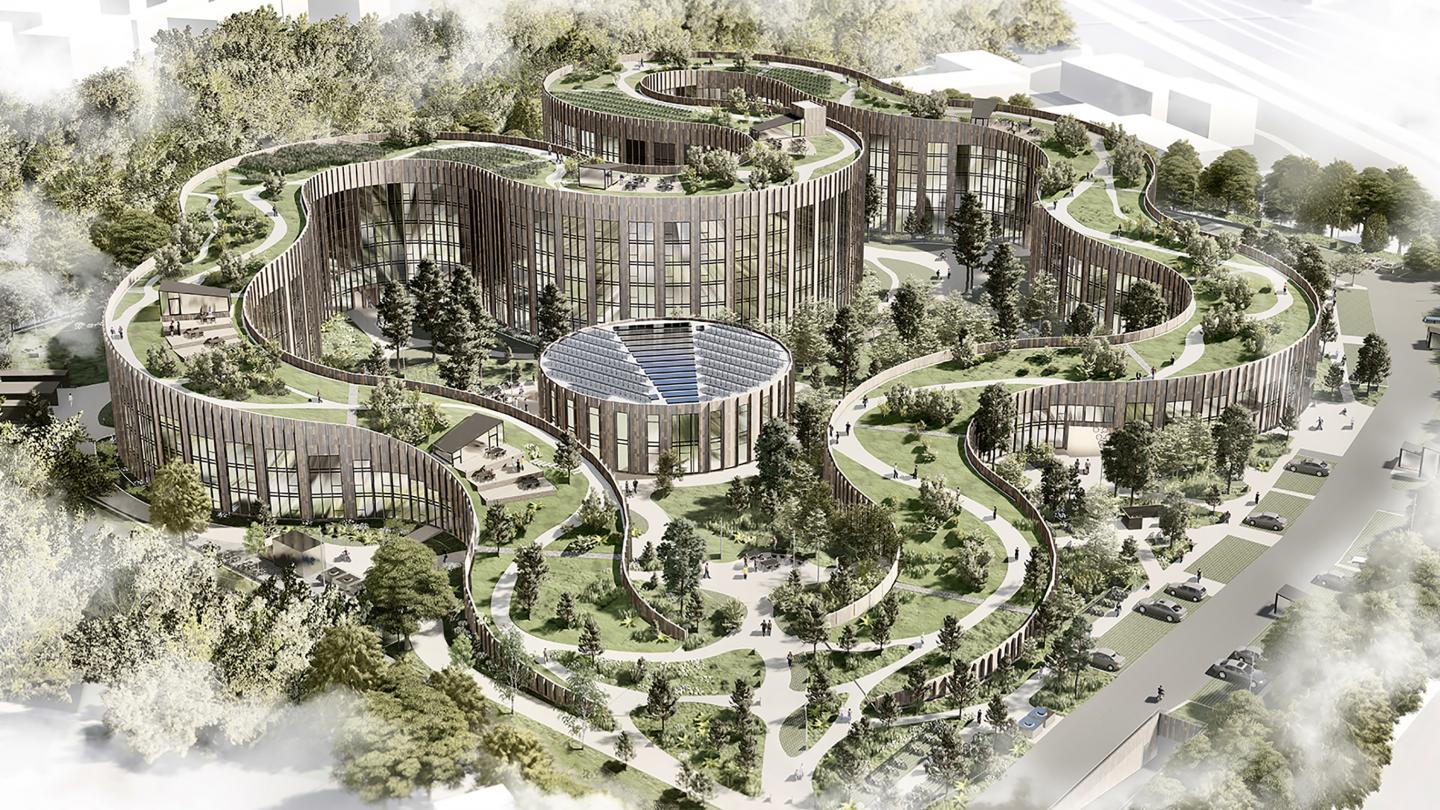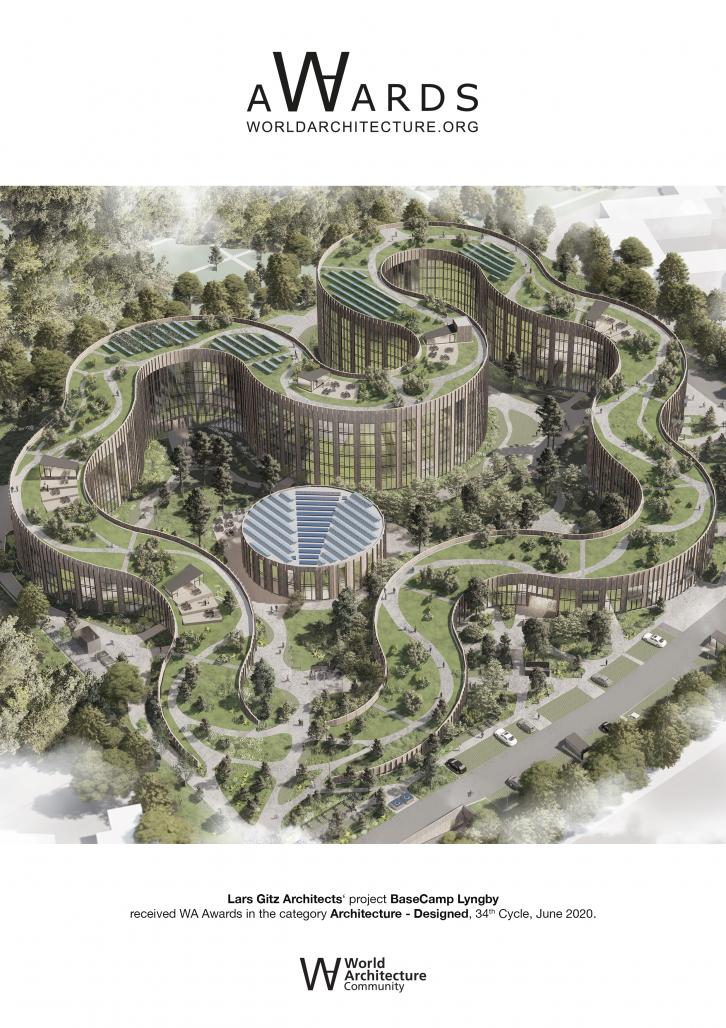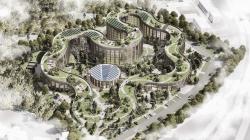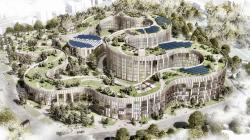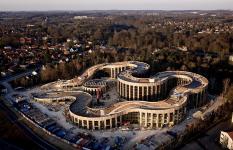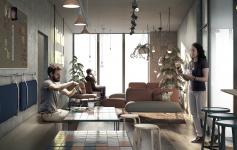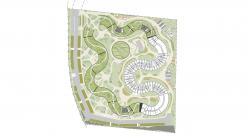Basecamp Lyngby is a socially interacting super structure and will function as a sustainable shared living community for 900 students, PhDs and senior citizens.
The area
The location is in the midst of beautiful nature, close to Lyngby Lake and the Unesco preserved park Dyrehaven, which provides the opportunity to hike, sail or kayak within a short reach. 1000 bike parking spaces encourage the use of the greenest transport.
It is a wish to give something back to the area by making the project accessible for the public, and in that way attract the local community in relation to social, economic and environmental aspects.
Arcitectural approach
BaseCamp Lyngby’s organic structure is inspired by the surrounding green area and a desire to bring people closer to the nature, and motivate them to interact with it and with one another. It is a social organism designed to be a catalyst for bringing people of all ages together for social interaction, as well as quiet immersion.
The architectural concept is about creating spaces that flow together unobstructed and provide intriguing experiences throughout the entire composition, from both the various inside court yards, as well as the outside landscape. Unexpected and surprising elements and views are fluently added to invite poetry and spirituality into the architecture. The height slowly rises with its peek on the south-east, where it reveals stunning views over Lyngby and The Lyngby Lake, as well as over the unfolding sculptural composition itself.
Experience and social interaction
The project is articulated with an entrance from the north that reveals a stunning view of the sculptural, organic volume that rises slowly from the ground level and welcomes people into the area. They are invited into the court yards or inspired to take a stroll of the publicly accessible, green roof landscape.
The organic volume is playfully wrapped around smaller courtyards, creating well defined intimate spaces for people to meet, read or simply enjoy life.
The central round shaped building is the heart of the area. It visually reinforces the structure and also interlinks the entire area by bringing together all the shared features such as the café, the gym, workshops, a cinema, library etc.
2018
2020
Sustainability
Building is certified to DGNB System Denmark level gold, with its green roof, solar panels and gardens for grocery growing.
Besides encouraging biodiversity, the green roof provides a rainwater buffer, purifies the air, reduces the ambient temperature, regulates the indoor temperature and saves energy. The facade material is Rock Panel Durable and is certified as BRE Class A+. The ventilation and heating systems are based on sustainable technologies. 90 % of the energy of the extracted air is reused for heating fresh air that ventilates the building.
Construction and materials
The structure is made of a single trapezoid shaped module. The module is repeated, turned 180 degrees and stacked in different heights in order to create the round organic shaped structure. This is what made it possible to construct the building without exceeding ordinary construction costs.
The facade materials corresponds with the natural green surroundings and the vertical shades enhances the organic form, and gives reference to the vertical experience from trees in forests.
Video URL:
https://youtu.be/bkkUr06GYXI
Lars Gitz Architects:
Lars Gitz, Jon Clausen, Nevena Milosevic, Kim Clausen, Mladen Stamenic, Sanne Motzfeldt Bentzen, Katrine Gulddahl.
BaseCamp Lyngby by Lars Gitz Architects in Denmark won the WA Award Cycle 34. Please find below the WA Award poster for this project.
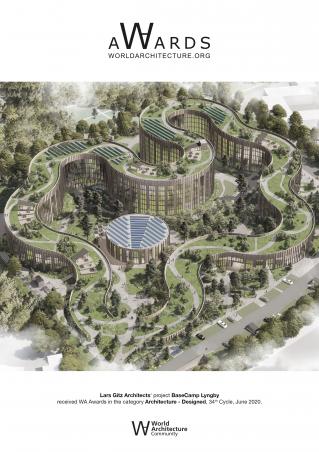
Downloaded 97 times.
